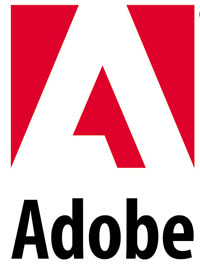For Adobe, Edge Represents Opportunity, Not Surrender
By Harry McCracken | Monday, August 1, 2011 at 4:08 pm
“Adobe Quietly Surrenders to Steve Jobs, Builds Flash Alternative .” That’s the headline on Adam Clark Estes’s article over at the Atlantic on Edge, Adobe’s new HTML5 authoring tool. It captures the tone of a lot of coverage I’ve seen. Edge supposedly represents a capitulation on Adobe’s part. And it’s supposedly a product that Adobe might never have come up with if Steve Jobs hadn’t kept Flash off of the iPhone and iPad and been bluntly public about his reasoning.
.” That’s the headline on Adam Clark Estes’s article over at the Atlantic on Edge, Adobe’s new HTML5 authoring tool. It captures the tone of a lot of coverage I’ve seen. Edge supposedly represents a capitulation on Adobe’s part. And it’s supposedly a product that Adobe might never have come up with if Steve Jobs hadn’t kept Flash off of the iPhone and iPad and been bluntly public about his reasoning.
Well, maybe. It’s true that the inability of Flash to run natively on iOS gives Adobe a powerful incentive to get on the HTML5 bandwagon. I tend to think, however, that this take gives Apple too much credit, and Adobe too little. Edge isn’t about Adobe bowing to Steve Jobs; it’s about it acknowledging reality. And Adobe shouldn’t be building this product in a grudging, grumbly fashion. If Edge is a great HTML5 tool, there’s no reason why it can’t be an enormously popular and profitable component of the company’s portfolio. It would be nuts for Adobe not to do it.
I’ve run Flash on a bunch of mobile devices based on three operating systems: Android, WebOS, and QNX. Sometimes it works, sort of. But that’s the best thing I can say about the experience. It’s usually painfully obvious that Flash really wants more computing horsepower than phones and tablets have. And even when performance isn’t a serious issue, it’s too often clear that most Flash content wasn’t designed with touchscreen input in mind.
End result: On mobile devices, Flash gets out of sync. Or freezes up. Or has odd display glitches. Or doesn’t let you control apps the way they were intended to be controlled. It introduces as many problems as it solves.
Even if Adobe is inclined to be biased in favor of Flash, and in favor of the profits that Flash currently brings, it must understand that mobile Flash in its current incarnation has severe issues. It keeps saying that the next version of Flash is going to be great. But by the time mobile Flash is great–or even just tolerable–it might be largely irrelevant. (Its absence on iOS hasn’t hurt Apple devices so much as forced sites and developers to redo their Flash-based creations so that they don’t require Flash anymore.)
But you know what? If Flash did run on iOS, it wouldn’t solve Adobe’s Flash problems. It would almost certainly be less than satisfactory there, too. It would still feel like the past, and HTML5 would still feel like the future.
And even if Flash somehow worked great on every mobile device, HTML5 would be here, and would be burgeoning–and it would make perfect sense for Adobe to create Edge.
There’s no scenario under which it’s a bad idea for Adobe to build a top-notch HTML5 authoring product. Adobe, I suspect, is capable of understanding that without Steve Jobs’ help. The hard part will be making sure that Edge is, in fact, that product.
6 Comments
Read more:













August 1st, 2011 at 5:28 pm
Did you read Steve Jobs open letter last year? Adobe is doing exactly what he suggested. “Perhaps Adobe should focus more on creating great HTML5 tools for the future, and less on criticizing Apple for leaving the past behind.”
August 1st, 2011 at 7:20 pm
I did read the letter (and blogged about it, and pretty much agreed with it). But the fact that Steve Jobs suggested this strategy doesn't mean that Adobe is doing it because of his letter, or that it represents a reversal of strategy. Adobe might be doing it simply because it's by far the most sensible thing to do–and would be even if mobile Flash worked wonderfully well.
–Harry
August 1st, 2011 at 11:30 pm
It works absolutely fine on my HTC Desire S. I've always assumed the reason Apple didn't want it on their iOS devices was so they could maintain control over what gets sold (and maintain their cut) through the app store? Probably for the best however, as like Real Player before it, it just annoying having to install and keep updated yet another plugin.
August 3rd, 2011 at 5:25 am
Adobe makes Dreamweaver. Dreamweaver makes HTML5 webpages. Adobe has never been against HTML 5, but about tools that help you publish different media, be it a .svg, .swf, .mp4, .js or .html file.
August 10th, 2011 at 6:33 am
It is about time Flash did this and I hope they do stay at the forefront of what Flash has brought to the web as I'm a fan of Flash and some of the creativity some people have done with it such as games and videos.
November 2nd, 2011 at 2:56 am
Then send out invitations to LinkedIn within 24 hours of meeting the person so that they remember you and will accept your invitation.